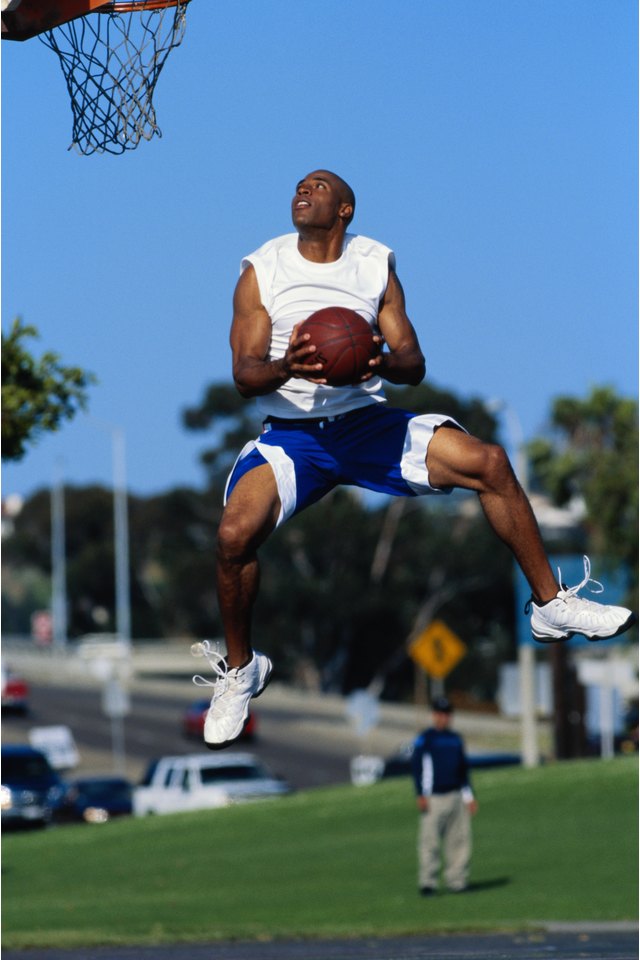Does Your Weight Affect the Height of Your Jump?

You body weight plays a major role in the height of your vertical jump. Just imagine putting on a 20-pound weighted vest and trying to jump straight up; it’s unlikely you can jump as high as without the vest. The same idea is true for excess body weight. The key is eliminating extra body fat and not lean muscle.
Muscle Versus Fat
Your body composition consists of lean mass and body fat. Muscle makes up a major part of your lean mass, and it’s an important factor in how high you can jump. Men need about 10 to 25 percent total body fat for optimal health, while women require 18 to 30 percent to maintain good health. You can measure your body fat several different ways, but the easiest and most economical way is to have your doctor use the skin-fold technique. If you find that your body fat is higher than it should be, you have some wiggle room to cut weight to help improve your vertical jump.
Power
Power lifts your body off the ground, and it’s measured by multiplying force by velocity. The more power you have in your lower body, the higher your vertical jump can be. The primary muscles utilized while jumping are the quadriceps, glutes, hamstrings and calves. You can improve the power of these muscles using techniques designed to increase lower-body power, including plyometrics. Examples of plyometric exercises include skipping rope rapidly, box jumps and explosive leap ups. Fast, forceful movements are the keys to building vertical jumping power.
Scientific Study
The circumference of your calves and thighs – for both men and women – is a major predictor of vertical jump potential, according to a 2006 study focused on professional ballet dancers. The study, published in the "Journal of Dance Medicine and Science," found that participants with a higher level of lean mass in their lower body were able to jump higher than participants with smaller, less muscular legs. The same results were found with regard to the circumference of participants' calf muscles: Larger calf muscles lead to higher vertical jumps.This study supports the fact that it’s not just your body weight, but also your lean mass, which affects your vertical jump capacity.
Boosting Vertical Jump
Although your weight does play a role in how high you can jump, the amount of lean muscle and power you have in your leg muscles is equally, if not more, important. You can maximize your vertical jump by cutting your body fat and strengthening your legs. Cut fat by doing 30 to 60 minutes of aerobic exercise four to six times per week at 55 to 85 percent of your maximum heart rate, which can be calcuated as 220 minus your age. Boost your leg power by integrating strength training into your workout plan, including lower-body workouts such as squats, calf raises, leg extensions, reverse leg curls, leg presses and plyometrics.
References
Writer Bio
Joseph Eitel has written for a variety of respected online publications since 2006 including the Developer Shed Network and Huddle.net. He has dedicated his life to researching and writing about diet, nutrition and exercise. Eitel's health blog, PromoteHealth.info, has become an authority in the healthy-living niche. He graduated with honors from Kellogg Community College in 2010 with an Associate of Applied Science.
